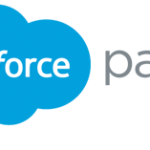"The Future of Cloud Computing: Dive Into the Latest Trends on Google Cloud Platform Blog!"

The objective of Google Cloud Platform (GCP) is to provide businesses with a comprehensive and scalable cloud computing infrastructure that enables them to build, deploy, and manage applications and services more efficiently and effectively. GCP aims to empower businesses to innovate and grow by offering a wide range of cloud-based services and solutions, including computing, storage, databases, machine learning, and analytics. Whether businesses are looking to migrate existing applications to the cloud, build new cloud-native applications, or harness the power of artificial intelligence and data analytics, GCP provides the tools and resources needed to achieve their goals. Ultimately, the objective of GCP is to help businesses leverage the benefits of cloud computing to drive innovation, improve agility, and accelerate digital transformation.
Cloud computing has revolutionized the way businesses operate, offering scalability, flexibility, and cost-efficiency. As technology continues to evolve, staying informed about the latest trends in cloud computing is essential for businesses to stay competitive.
Over the years, cloud computing has evolved from a novel concept to a mainstream technology that powers businesses of all sizes across various industries. From infrastructure as a service (IaaS) to platform as a service (PaaS) and software as a service (SaaS), the cloud has transformed the way businesses deploy and manage IT resources.
In today's fast-paced digital landscape, staying updated on the latest trends in cloud computing is crucial for businesses to leverage emerging technologies and stay ahead of the curve. By understanding current market trends and innovations, businesses can make informed decisions about their cloud strategy and drive innovation within their organizations.
Google Cloud Platform (GCP) is one of the leading cloud computing platforms, offering a wide range of services and solutions for businesses of all sizes. From computing and storage to data analytics and machine learning, GCP provides the tools and infrastructure needed to build, deploy, and scale applications in the cloud.
- The Google Cloud Platform Blog serves as a valuable resource for developers, IT professionals, and business leaders to stay updated on the latest news, updates, and trends in cloud computing. With a wealth of insightful articles, case studies, and best practices, the GCP Blog provides valuable insights into how businesses can leverage cloud technology to drive innovation and growth
Hybrid Cloud Adoption
Hybrid cloud adoption is on the rise as businesses seek to leverage the benefits of both public and private cloud environments. By combining on-premises infrastructure with public cloud services, businesses can achieve greater flexibility, scalability, and agility while maintaining control over sensitive data and applications.
Multi-Cloud Strategy
With the increasing complexity of IT environments, many businesses are adopting a multi-cloud strategy to avoid vendor lock-in and maximize flexibility. By leveraging multiple cloud providers, businesses can choose the best services for their specific needs and avoid reliance on a single vendor.
Edge Computing
Edge computing is gaining traction as businesses look to process data closer to the source to reduce latency and improve performance. By moving computing resources closer to the edge of the network, businesses can support real-time applications and services that require low latency and high bandwidth.
Serverless Computing
Serverless computing is revolutionizing the way businesses deploy and manage applications in the cloud. By abstracting away the underlying infrastructure, serverless computing enables developers to focus on writing code without worrying about provisioning, scaling, or managing servers
The Google Cloud Platform Blog offers in-depth articles and case studies on each of these trends, providing valuable insights into how businesses can leverage emerging technologies to drive innovation and growth. From practical tips and best practices to real-world examples and success stories, the GCP Blog is a treasure trove of information for businesses looking to stay ahead in the cloud computing landscape.
Hybrid cloud adoption is reshaping the way businesses deploy and manage IT infrastructure, offering the best of both worlds in terms of flexibility, scalability, and control. By combining on-premises infrastructure with public cloud services, businesses can achieve greater agility and efficiency while maintaining control over sensitive data and applications.
Definition and Benefits
Hybrid cloud adoption involves the use of both on-premises infrastructure and public cloud services to meet the diverse needs of modern businesses. By leveraging a hybrid cloud strategy, businesses can enjoy the benefits of cloud computing while maintaining control over critical data and applications.
Case Studies
Numerous businesses across various industries have successfully adopted hybrid cloud solutions to drive innovation and growth. From large enterprises to small startups, businesses are leveraging hybrid cloud environments to achieve greater agility, scalability, and cost-efficiency.
As businesses increasingly rely on cloud services to power their operations, many are adopting a multi-cloud strategy to avoid vendor lock-in and maximize flexibility. By leveraging multiple cloud providers, businesses can choose the best services for their specific needs and avoid reliance on a single vendor.
Overview and Advantages
A multi-cloud strategy involves the use of multiple cloud providers to meet the diverse needs of modern businesses. By leveraging multiple cloud platforms, businesses can avoid vendor lock-in, mitigate risk, and maximize flexibility and innovation.
Implementation Best Practices
Implementing a multi-cloud strategy requires careful planning and execution to ensure success. Businesses must assess their requirements, evaluate different cloud providers, and develop a comprehensive strategy for managing multiple cloud environments effectively
Edge computing is revolutionizing the way businesses process and analyze data by moving computing resources closer to the source. By processing data closer to the edge of the network, businesses can reduce latency, improve performance, and support real-time applications and services.
Emerging Trends and Use Cases
Edge computing is being increasingly adopted across various industries, including manufacturing, healthcare, and retail, to support a wide range of use cases. From autonomous vehicles to IoT devices, edge computing enables businesses to process data closer to the source and deliver real-time insights and services.
Implications for Businesses
The rise of edge computing has significant implications for businesses, requiring them to rethink their approach to data processing and analytics. By moving computing resources closer to the edge, businesses can improve performance, reduce latency, and support emerging technologies and use cases.
Serverless computing is transforming the way businesses deploy and manage applications in the cloud by abstracting away the underlying infrastructure. By eliminating the need to provision, scale, and manage servers, serverless computing enables developers to focus on writing code and delivering value to customers.
Introduction and Benefits
Serverless computing is a cloud computing model that abstracts away the underlying infrastructure, allowing developers to focus on writing code without worrying about provisioning, scaling, or managing servers. By eliminating the need to manage infrastructure, serverless computing enables businesses to reduce costs, improve agility, and accelerate time-to-market.
Real-world Applications
Serverless computing is being increasingly adopted across various industries to support a wide range of applications and use cases. From web applications to data processing pipelines, serverless computing enables businesses to build and deploy applications more efficiently and cost-effectively
In conclusion, the future of cloud computing is bright, with emerging trends such as hybrid cloud adoption, multi-cloud strategy, edge computing, and serverless computing reshaping the way businesses deploy and manage IT infrastructure. By staying informed about the latest trends and innovations in cloud computing, businesses can leverage emerging technologies to drive innovation and growth.
What is hybrid cloud adoption? Hybrid cloud adoption involves the use of both on-premises infrastructure and public cloud services to meet the diverse needs of modern businesses.
Why are businesses adopting a multi-cloud strategy? Businesses are adopting a multi-cloud strategy to avoid vendor lock-in, maximize flexibility, and choose the best services for their specific needs.
What are the benefits of edge computing? Edge computing enables businesses to reduce latency, improve performance, and support real-time applications and services by processing data closer to the source.
How does serverless computing work? Serverless computing abstracts away the underlying infrastructure, allowing developers to focus on writing code without worrying about provisioning, scaling, or managing servers.
How can businesses stay updated on the latest trends in cloud computing? Businesses can stay updated on the latest trends in cloud computing by following industry news, attending conferences and events, and reading blogs and publications from leading cloud providers.




